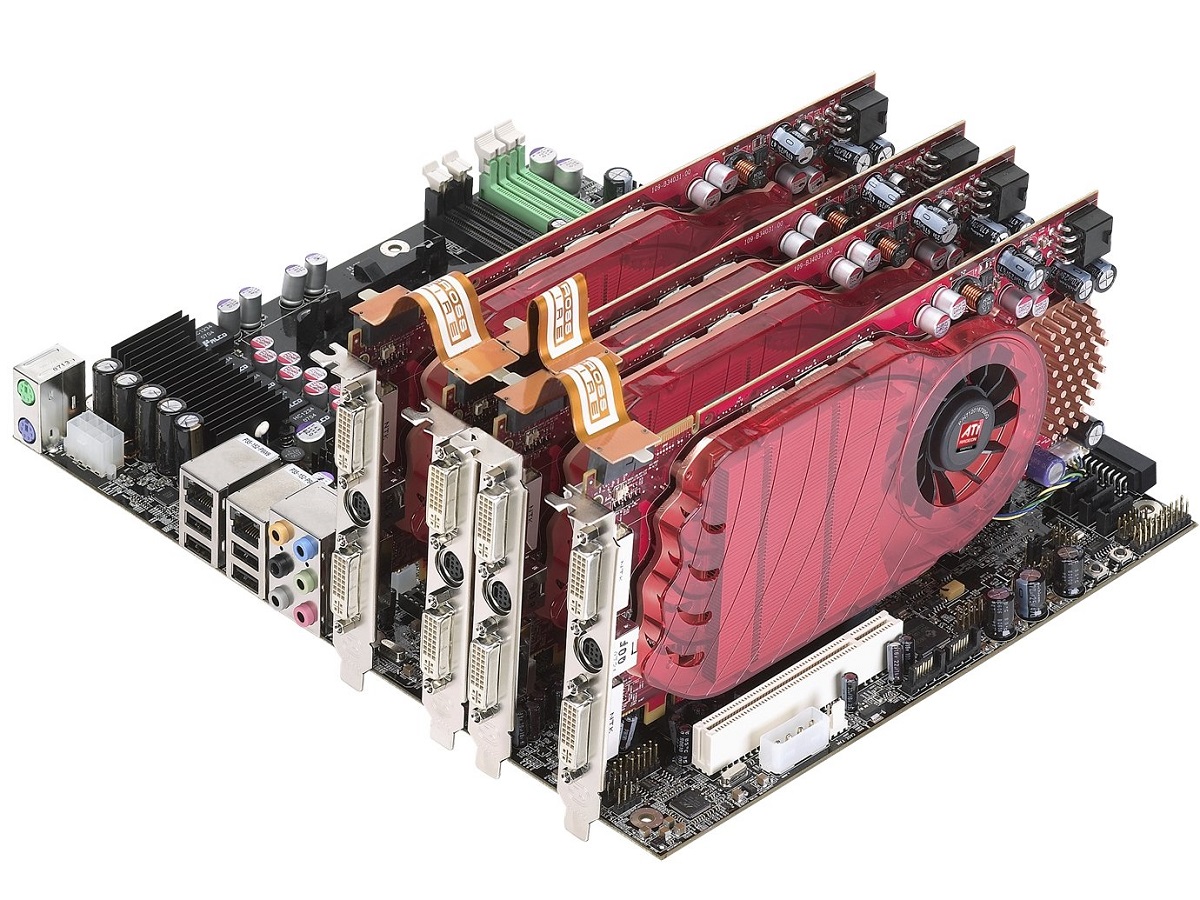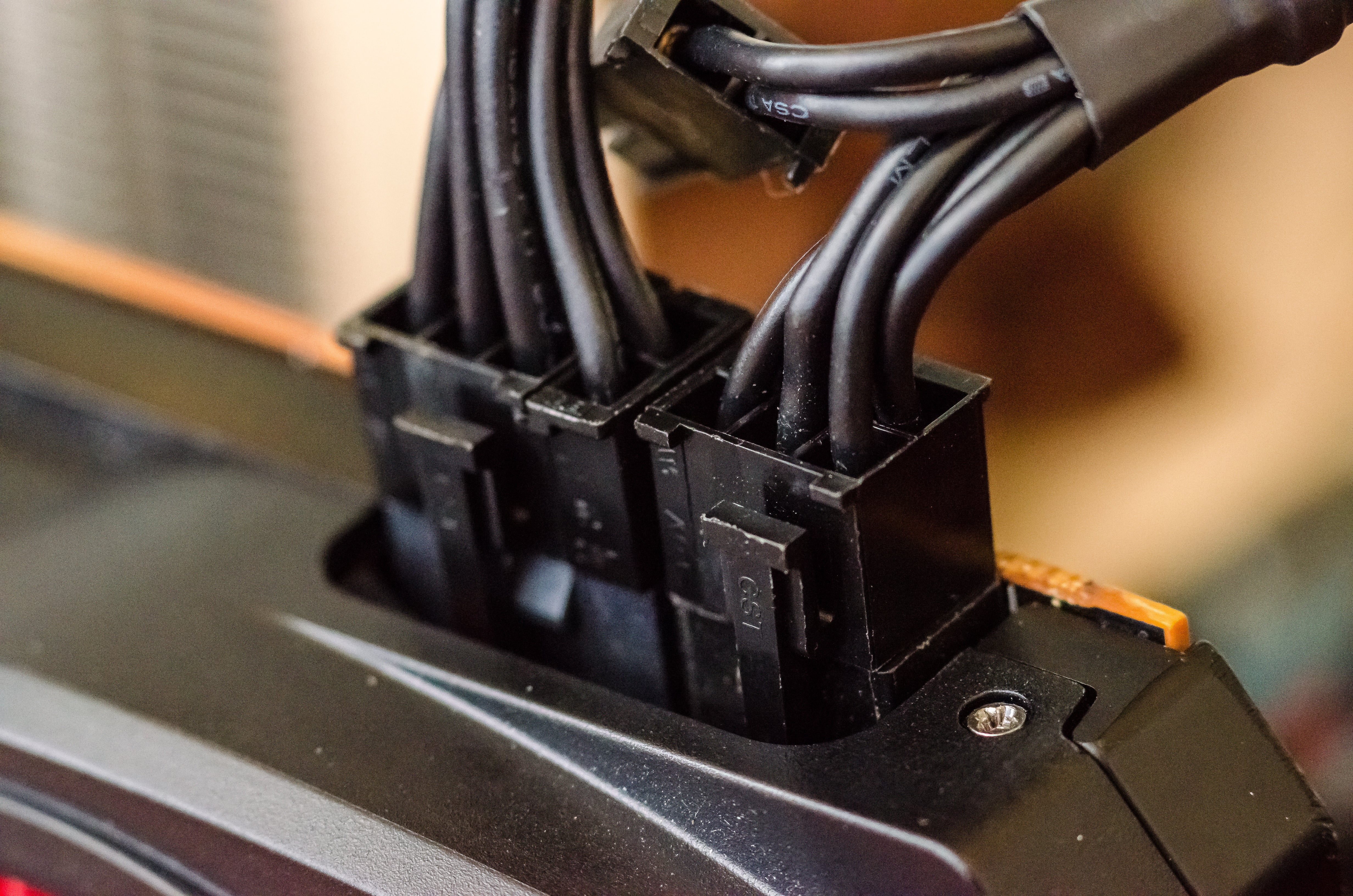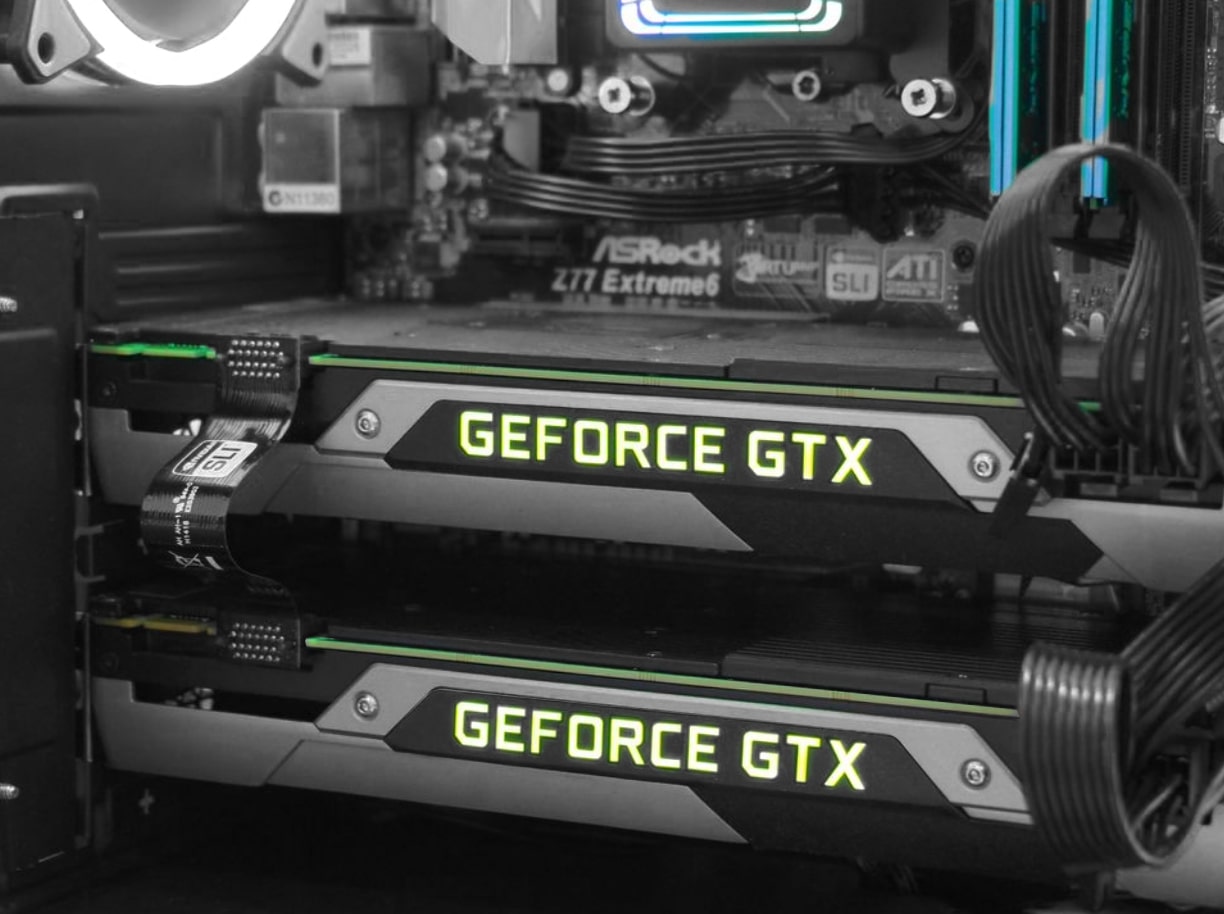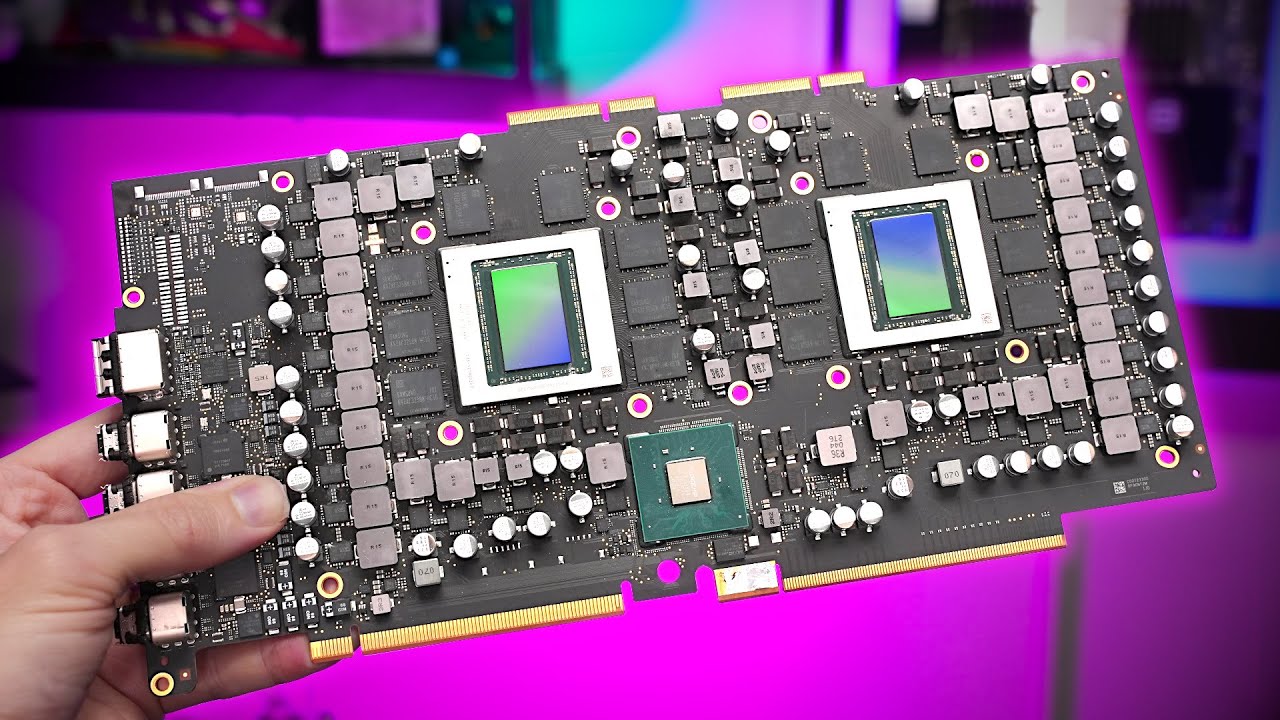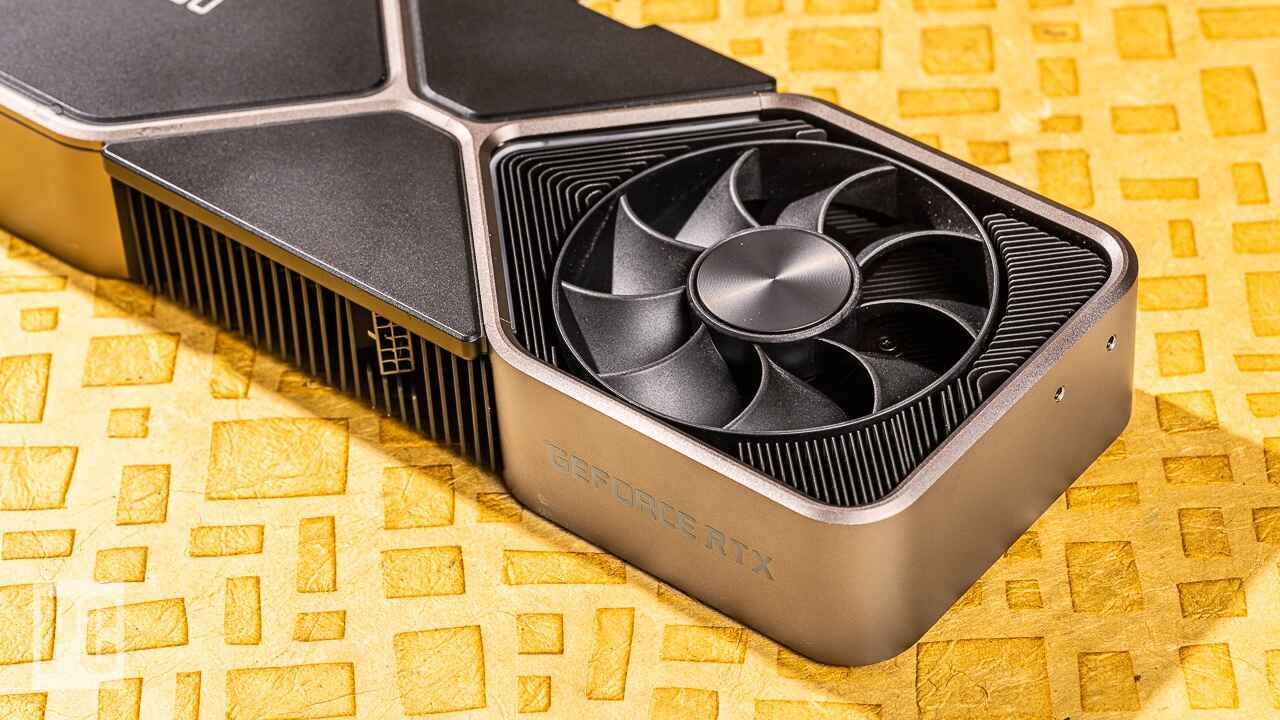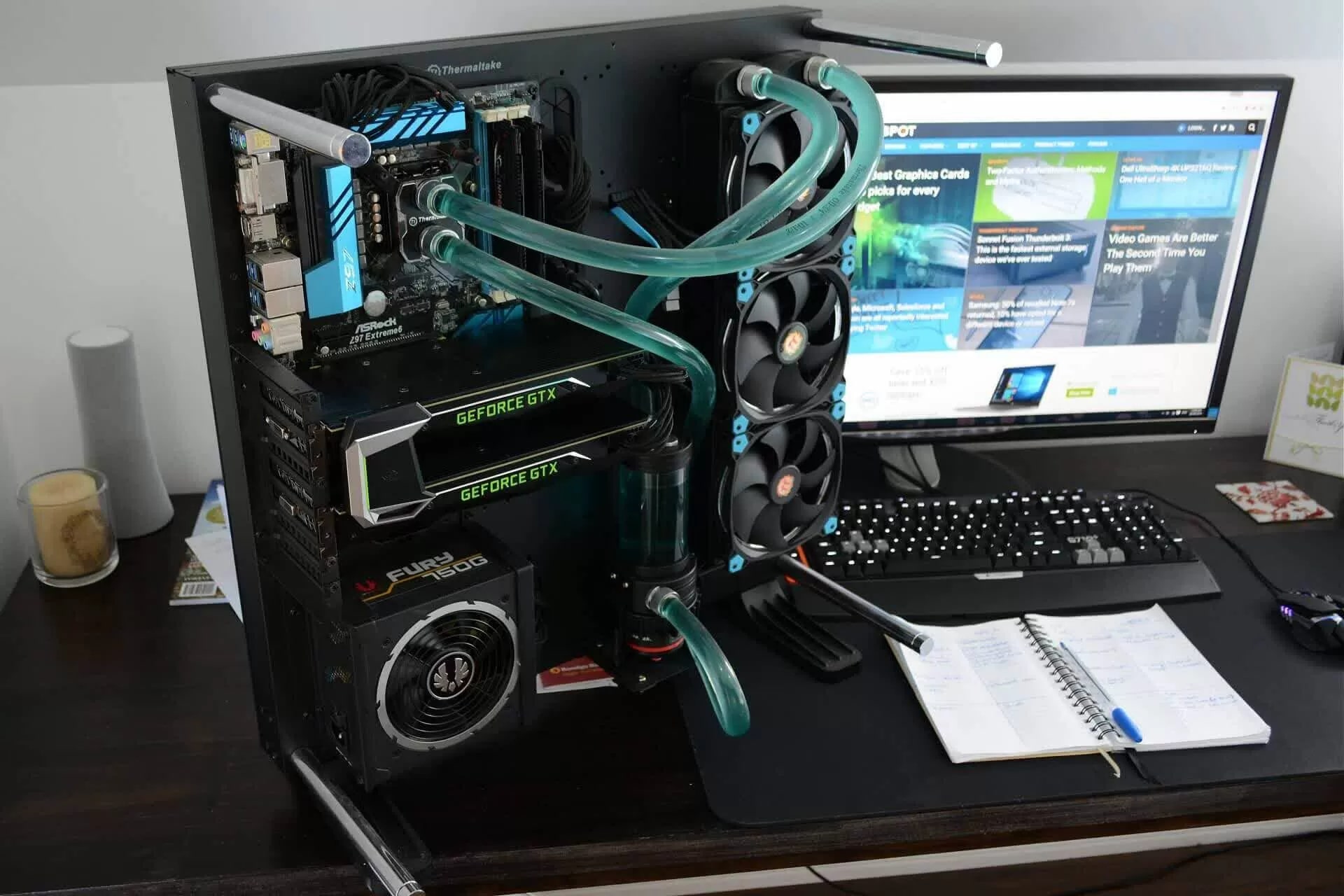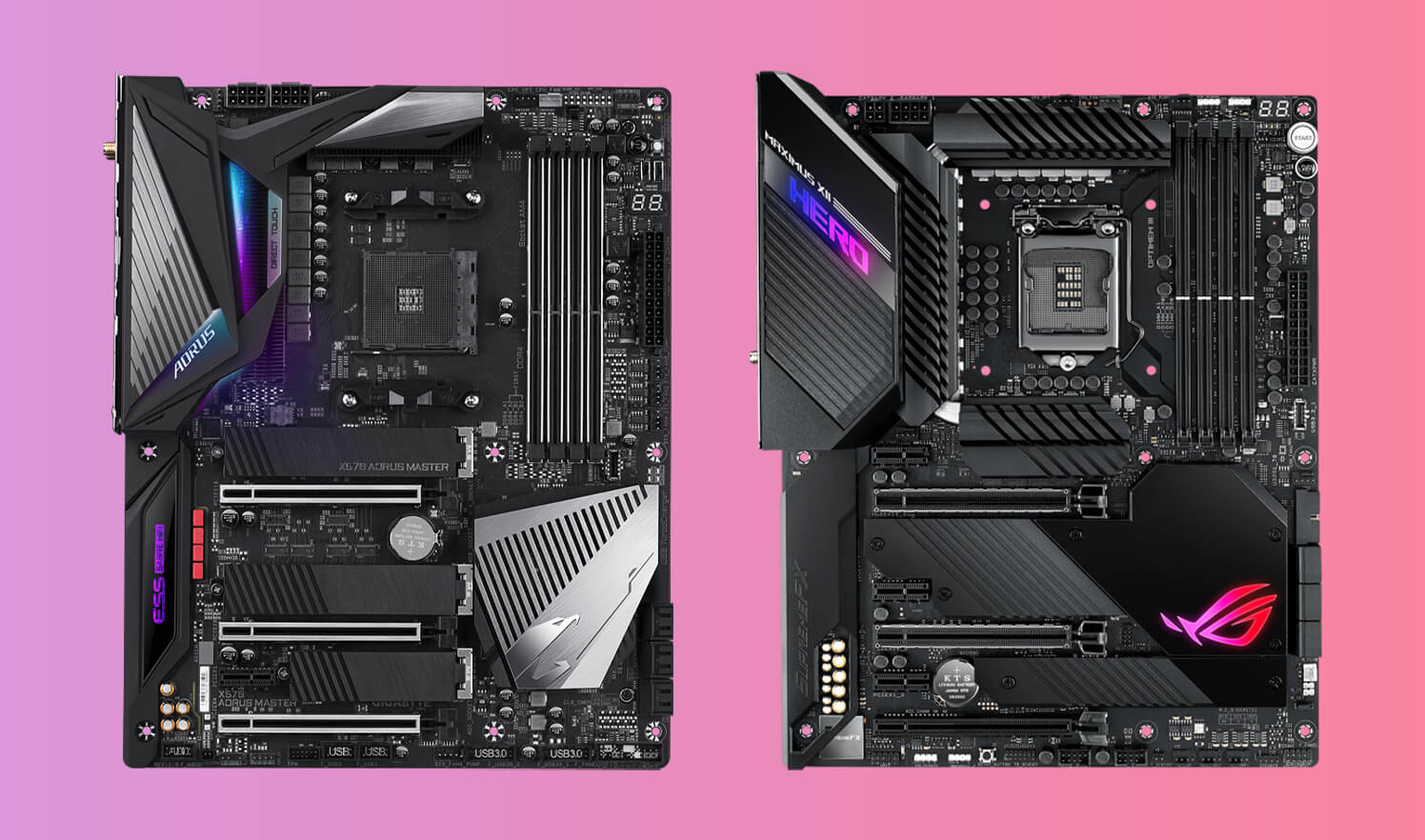Introduction
A graphics card is an essential component of a computer system that is responsible for rendering and displaying visual content on a monitor. It plays a crucial role in enhancing the overall performance and graphical capabilities of a computer, especially when it comes to tasks that require high-resolution graphics or intense processing power.
SLI, which stands for Scalable Link Interface, is a technology developed by Nvidia that allows users to combine multiple graphics cards in their system to work together, effectively increasing the overall graphics performance. SLI is primarily targeted towards gamers and other professionals who require immersive and visually-intensive experiences on their computers.
By utilizing SLI, users can harness the power of multiple graphics cards to process and render graphics faster, resulting in smoother gameplay, improved frame rates, and enhanced visual effects. This technology has revolutionized the way graphics-intensive applications and games are experienced, providing users with a higher level of immersion and realism.
In this article, we will delve into the world of graphics card SLI, exploring how it works, its advantages and disadvantages, compatibility and requirements, and how to set it up. Whether you are a gaming enthusiast or a professional in need of increased graphical performance, understanding SLI can help you make informed decisions when it comes to upgrading your computer system.
So, let’s dive in and explore the fascinating world of graphics card SLI and how it can elevate your computing experience to new heights.
What is a Graphics Card?
A graphics card, also known as a video card or GPU (Graphics Processing Unit), is a hardware component that is dedicated to rendering and displaying visual content on a computer monitor. It is an essential part of any modern computer system, especially for those who engage in graphics-intensive activities such as gaming, video editing, or 3D modeling.
At its core, a graphics card works by taking the visual data from the computer’s CPU (Central Processing Unit) and converting it into signals that the monitor can understand. It does this by utilizing various components, including a processor, memory, and a multitude of transistors, to perform complex calculations and render the images in real-time.
The primary responsibility of a graphics card is to handle and process graphical tasks efficiently and swiftly. This includes tasks such as rendering 2D and 3D images, calculating lighting effects and shadows, and handling the textures and colors of displayed objects. The more powerful the graphics card, the smoother and more detailed the visuals it can produce.
Most graphics cards come with their own built-in memory, known as VRAM (Video Random Access Memory). The VRAM is used to temporarily store the graphical data, textures, and other relevant information that the GPU requires to render the images. The amount of VRAM in a graphics card directly affects its ability to handle high-resolution textures and perform memory-intensive tasks.
Over the years, graphics cards have evolved at a rapid pace, with companies like Nvidia and AMD constantly pushing the boundaries of performance and technology. Newer graphics cards feature higher clock speeds, increased numbers of cores, and advanced cooling systems to handle the heat generated during intense graphical processing.
Whether you are a professional designer, a gamer, or simply someone who appreciates stunning visuals, a high-quality graphics card is essential for achieving the best possible graphical performance on your computer.
What is SLI?
SLI, or Scalable Link Interface, is a technology developed by Nvidia to enable users to combine multiple graphics cards in their system to work together and enhance graphical performance. SLI allows for parallel processing, where the workload is divided between the graphics cards, effectively boosting the overall rendering power, frame rates, and visual quality.
With SLI, two or more compatible Nvidia graphics cards can be installed in a system, connected by an SLI bridge or through the motherboard’s PCIe slots. These cards work in tandem to process graphical data and deliver an improved gaming or computing experience. It’s worth noting that SLI is specific to Nvidia graphics cards, and there is an equivalent technology for AMD called CrossFire.
SLI operates by dividing the rendering workload across the multiple graphics cards. Each card works on different sections of the image or individual frames, resulting in faster rendering times and smoother gameplay. SLI is particularly beneficial when it comes to high-resolution gaming, virtual reality, and other graphics-intensive applications.
SLI also provides the flexibility to choose the configuration that best suits the user’s needs. For example, you can have two identical graphics cards from the same model, or you can mix and match different models within the same series as long as they support SLI. However, it’s important to have a compatible motherboard that supports multiple PCIe slots and ensure that the power supply can handle the increased power requirements of multiple cards.
It’s worth mentiong that SLI is not limited to desktop computers as some gaming laptops also support SLI technology, allowing users to enjoy high-performance graphics on a portable device.
In summary, SLI is a technology that allows users to combine multiple Nvidia graphics cards for improved graphical performance. By harnessing the combined processing power of multiple GPUs, SLI offers smoother gameplay, increased frame rates, and enhanced visual fidelity for gamers and professionals alike.
How does SLI work?
SLI, or Scalable Link Interface, works by leveraging the capabilities of multiple Nvidia graphics cards to divide and conquer the graphics rendering workload, resulting in enhanced performance and visual quality.
When SLI is enabled, the primary graphics card, known as the “master” card, handles the majority of the data processing and sends the relevant data to the secondary or “slave” card(s). The slave card(s) then work in tandem with the master card to process the remaining workload, which can include rendering additional frames, applying complex visual effects, or handling higher resolution textures.
To facilitate communication between the graphics cards, an SLI bridge is used. This bridge connects the SLI connectors on each card, allowing them to exchange data and synchronize their efforts. The bridge ensures a high-speed data transfer between the graphics cards, minimizing latency and maximizing efficiency.
SLI utilizes a technique called Alternate Frame Rendering (AFR). With AFR, each graphics card in the SLI configuration takes turns rendering the frames. For example, if you are running a game at 60 frames per second (fps) on a two-card SLI setup, the master card will render the even-numbered frames, while the slave card will render the odd-numbered frames. This parallel processing enables the graphics cards to render frames faster and provide a smoother gameplay experience.
In addition to AFR, SLI also supports other rendering modes, including Split Frame Rendering (SFR) and SLI Antialiasing. SFR divides the screen into sections, with each graphics card rendering a separate section, typically resulting in higher performance. SLI Antialiasing focuses on improving image quality by reducing jagged edges and enhancing visual smoothness.
It’s important to note that not all games and applications are optimized for SLI, and some may not see a significant performance boost from using multiple graphics cards. However, many popular games and graphics-intensive applications have SLI profiles available that have been specifically optimized to take advantage of multiple GPUs. This ensures that the game or application can effectively utilize the power of SLI to deliver improved performance and visual fidelity.
In summary, SLI works by distributing the graphics rendering workload across multiple Nvidia graphics cards, allowing them to work together to deliver enhanced performance and visual quality. SLI harnesses the power of parallel processing to provide smoother gameplay, increased frame rates, and improved graphics for a superior computing experience.
Advantages of SLI
SLI, or Scalable Link Interface, offers several advantages for users who require high-performance graphics and immersive gaming experiences. Let’s explore some of the key benefits of utilizing SLI in your computer system:
- Increased Graphics Performance: One of the primary advantages of SLI is the significant boost in graphics performance. By combining multiple Nvidia graphics cards, SLI enables parallel processing, allowing for faster rendering of graphics, higher frame rates, and smoother gameplay. This is especially beneficial when running graphics-intensive applications, such as modern AAA games or professional software.
- Enhanced Visual Quality: SLI can greatly enhance the visual quality of games and applications by enabling higher resolutions, improved anti-aliasing, and more detailed textures. With SLI, you can experience games with sharper images, reduced jagged edges, enhanced lighting effects, and more realistic visual effects overall.
- Optimized Multi-Monitor Setups: SLI is particularly advantageous for users with multi-monitor setups. SLI allows for seamless integration of multiple monitors, providing a wider field of view and enhanced productivity. Whether you are a content creator needing ample screen real estate or a gamer wanting to immerse yourself in a panoramic gaming experience, SLI can optimize your multi-monitor setup.
- Future-Proofing: SLI offers a degree of future-proofing by allowing you to upgrade your graphics performance without completely replacing your existing graphics card. With SLI, you can simply add another compatible graphics card to increase performance as new games and applications demand higher graphical capabilities.
- Performance Scaling: SLI exhibits impressive performance scaling, meaning that the performance gains achieved by adding additional graphics cards are often linear or close to it. This scalability ensures that the more graphics cards you add, the more noticeable improvement in performance you can expect, providing a significant return on your investment.
Overall, SLI provides users with improved graphics performance, enhanced visual quality, optimized multi-monitor setups, future-proofing capabilities, and impressive performance scaling. These advantages make SLI an attractive option for gamers, content creators, and professionals who require top-of-the-line graphics to elevate their computing experience.
Disadvantages of SLI
While SLI offers compelling advantages, it is important to consider the potential drawbacks before implementing it in your computer system. Here are some of the main disadvantages associated with SLI:
- Increased Power Consumption and Heat: SLI configurations typically require more power compared to a single graphics card setup. This can lead to higher power consumption and increased heat generation, necessitating a robust power supply and efficient cooling solutions to maintain stable and optimal performance.
- Compatibility and Support: Not all games and applications are optimized to fully utilize SLI. Some may not see a significant performance boost, while others may experience compatibility issues or display glitches. It is important to check for SLI support and compatibility before investing in multiple graphics cards.
- Limited Application Scope: SLI is primarily beneficial for graphics-intensive tasks such as gaming or professional applications that heavily rely on graphical performance. For regular day-to-day computing tasks like web browsing or word processing, the benefits of SLI may not be noticeable or worth the additional cost.
- Increased Cost: Implementing SLI requires the purchase of additional graphics cards, an SLI bridge, and potentially a higher wattage power supply. This can significantly increase the cost of your computer system, making it a less budget-friendly option compared to a single high-performance graphics card.
- Driver and Software Support: Graphics card drivers and software updates may present challenges when using an SLI configuration. New game releases or software updates may require time for Nvidia to release new drivers that are optimized for SLI. This delay can result in compatibility issues or reduced performance until the necessary updates are available.
Considering the increased power consumption, compatibility concerns, limited application scope, higher cost, and potential driver and software support challenges, it is important to weigh the advantages against the disadvantages of SLI. While SLI can offer significant performance improvements for certain use cases, it may not be necessary or practical for every user.
How to Set Up SLI
Setting up SLI, or Scalable Link Interface, requires a few steps to ensure optimal performance and compatibility. Here’s a guide on how to set up SLI in your computer system:
- Verify Graphics Card Compatibility: Firstly, confirm that your graphics cards are SLI compatible. Check the manufacturer’s website or the product documentation to ensure that the graphics cards you intend to use support SLI technology.
- Install and Update Graphics Card Drivers: Ensure that you have the latest graphics card drivers installed for your Nvidia GPUs. Visit the Nvidia website or use GeForce Experience to download and install the most up-to-date drivers for your specific graphics cards.
- Enable SLI in Nvidia Control Panel: Open the Nvidia Control Panel on your computer. Navigate to the “3D Settings” or “Configure SLI, Surround, PhysX” section. Here, you will find the option to enable SLI. Select the “Maximize 3D Performance” setting and apply the changes.
- Physically Install the Graphics Cards: Power off your computer and physically install the additional graphics card(s) into the available PCIe slot(s) on the motherboard. Connect the SLI bridge between the SLI connectors on each graphics card, ensuring a secure connection.
- Make Necessary Power and Cooling Adjustments: Verify that your power supply can handle the power requirements of the SLI configuration and that you have the necessary PCIe power connectors. Additionally, ensure that your computer case has sufficient airflow and cooling to handle the increased heat generated by multiple graphics cards.
- Restart and Verify SLI Configuration: Power on your computer and verify that SLI is enabled. You can check the Nvidia Control Panel again to ensure that SLI is active and functioning correctly. Additionally, you can run benchmarks or test games to confirm improved performance and smooth gameplay.
It’s worth noting that the specific steps may vary slightly depending on your motherboard, graphics card model, and the version of the Nvidia drivers. Always refer to the manufacturer’s documentation and recommended guidelines for your specific hardware.
Remember that SLI is not a universal solution for all applications or games, and you may need to tweak individual game settings to maximize SLI performance. Additionally, periodically check for driver updates to ensure that you have the latest optimizations and bug fixes for SLI-enabled games and applications.
By following these steps, you can successfully set up SLI and take advantage of the increased graphics performance offered by combining multiple Nvidia graphics cards in your computer system.
Compatibility and Requirements
When considering SLI, it is important to ensure compatibility between your hardware components and meet the necessary requirements. Here are some key factors to consider:
- Graphics Card Compatibility: SLI is a technology specific to Nvidia graphics cards. To enable SLI, ensure that your graphics cards support SLI technology. Check the manufacturer’s website or product documentation for compatibility details.
- Motherboard Compatibility: Verify that your motherboard supports SLI. Look for the SLI certification, which indicates that the motherboard has the necessary PCIe slots and SLI support. Refer to the motherboard’s documentation or manufacturer’s website for compatibility information.
- SLI Bridge: Utilize an SLI bridge to connect the SLI connectors on each graphics card. SLI bridges come in various sizes, so choose the appropriate bridge for your specific motherboard and SLI configuration.
- Power Supply: SLI configurations can require significant power, so ensure that your power supply can handle the increased power demands. Check the power requirements of your graphics cards and verify that your power supply has sufficient wattage and PCIe power connectors.
- Cooling and Airflow: Multiple graphics cards in SLI generate more heat, so adequate cooling is crucial. Ensure that your computer case has sufficient airflow with proper cooling solutions such as fans or liquid cooling to maintain optimal temperatures.
- Driver Support: SLI relies on graphics drivers to function properly. Ensure that you have the latest Nvidia graphics card drivers installed, as they often include SLI profiles and optimizations for games and applications.
It’s important to note that SLI typically works best when using two identical graphics cards from the same model. However, Nvidia also supports SLI with different models within the same series. This can provide flexibility in terms of mixing and matching cards while still benefitting from increased performance.
Furthermore, SLI is most effective with games and applications that have been specifically optimized for SLI. However, not all games may offer substantial performance gains with SLI, so it’s important to check for SLI support and performance reviews for specific titles.
Lastly, consider the future-proofing aspect of SLI. As technology progresses, newer graphics cards and architectures may provide more performance and efficiency gains than running multiple older cards in SLI. Always evaluate the cost-to-performance ratio when deciding whether to invest in SLI or consider a single high-performance graphics card as an alternative.
By ensuring compatibility and meeting the necessary requirements, you can set up an SLI configuration that maximizes the performance and potential of multiple Nvidia graphics cards in your computer system.
Frequently Asked Questions
Here are some commonly asked questions about SLI and their answers:
- Can I use SLI with different models of graphics cards?
Yes, SLI supports using different models of graphics cards within the same series. However, it is generally recommended to use two identical graphics cards for optimal performance and compatibility. - Is SLI only beneficial for gaming?
While SLI is well-known for enhancing gaming performance, it can also benefit other graphics-intensive tasks such as video editing, 3D modeling, and rendering. SLI can provide faster rendering times, improved visual quality, and smoother performance in these applications. - Do all games support SLI?
Not all games are specifically optimized for SLI, and therefore may not see extensive performance gains in an SLI configuration. However, many popular games have SLI profiles available, allowing them to take advantage of multiple graphics cards and deliver improved performance. It is important to check for SLI support and performance reviews for specific games. - What is the difference between SLI and CrossFire?
SLI is an Nvidia technology, while CrossFire is the equivalent technology developed by AMD. Both SLI and CrossFire allow users to combine multiple graphics cards for increased performance. The main difference lies in the hardware and software implementation by each manufacturer. - Can I combine an Nvidia graphics card with an AMD graphics card in a single system?
No, SLI only works with Nvidia graphics cards. Likewise, AMD’s CrossFire technology only supports combining multiple AMD graphics cards. You cannot combine graphics cards from different manufacturers. - Do I need a specific SLI bridge for my SLI configuration?
SLI bridges come in various sizes and configurations to accommodate different motherboard layouts. It is recommended to use an SLI bridge that matches the spacing of the SLI connectors on your graphics cards and fits the PCIe slots on your motherboard.
Remember to refer to the specific documentation of your graphics cards, motherboard, and the Nvidia website for more detailed information and support regarding SLI.
Should you have any further questions, it is always recommended to consult with technical support or forums dedicated to graphics cards and SLI configurations. This will help ensure that you have accurate and up-to-date information relevant to your specific hardware setup.
Conclusion
SLI, or Scalable Link Interface, offers an exciting opportunity to boost graphics performance by combining multiple Nvidia graphics cards in your computer system. With parallel processing, SLI delivers enhanced rendering capabilities, increased frame rates, and improved visual quality for gaming and graphics-intensive applications.
By dividing the workload across multiple graphics cards, SLI harnesses the power of parallel processing to deliver smoother gameplay, higher resolutions, and more realistic visual effects. It offers advantages such as increased graphics performance, enhanced visual quality, optimized multi-monitor setups, future-proofing capabilities, and impressive performance scaling.
Before considering SLI, it is important to ensure compatibility and meet the necessary requirements. Verify that your graphics cards and motherboard support SLI, use a compatible SLI bridge, consider power supply and cooling requirements, and keep your graphics card drivers up to date.
Although SLI brings numerous benefits, it is also important to consider the potential downsides. These include increased power consumption and heat, compatibility and support concerns, limited application scope, increased cost, and potential challenges with driver and software support.
Ultimately, the decision to implement SLI depends on your specific needs and budget. It’s important to weigh the advantages and disadvantages, and consider whether the increased graphics performance provided by SLI is necessary for your intended usage. For gamers and professionals looking to maximize graphical performance, SLI can provide a significant boost in visuals and gameplay experience.
When setting up SLI, follow the recommended steps, ensure compatibility between components, and stay informed about driver updates and game optimization. It is worth noting that as technology progresses, the performance gains from SLI configurations may be surpassed by single high-performance graphics cards in the future.
in conclusion, SLI can be a powerful tool for achieving enhanced graphics performance, but it is essential to carefully assess your specific requirements, compatibility, and cost considerations before diving into an SLI configuration.







